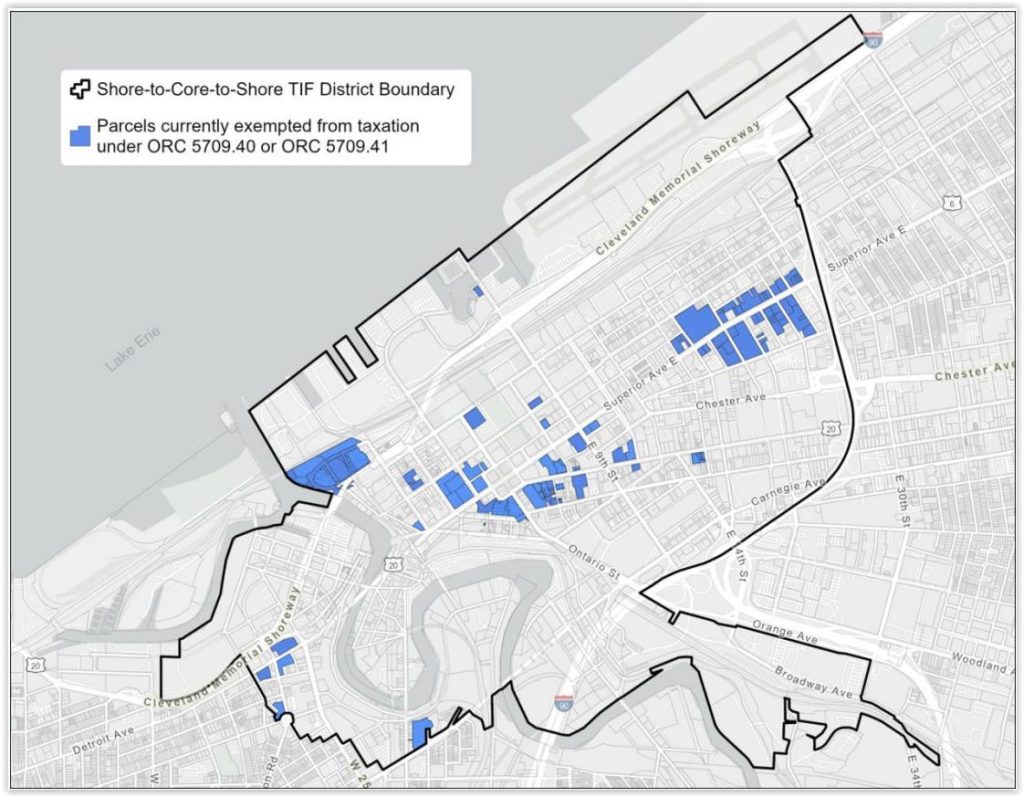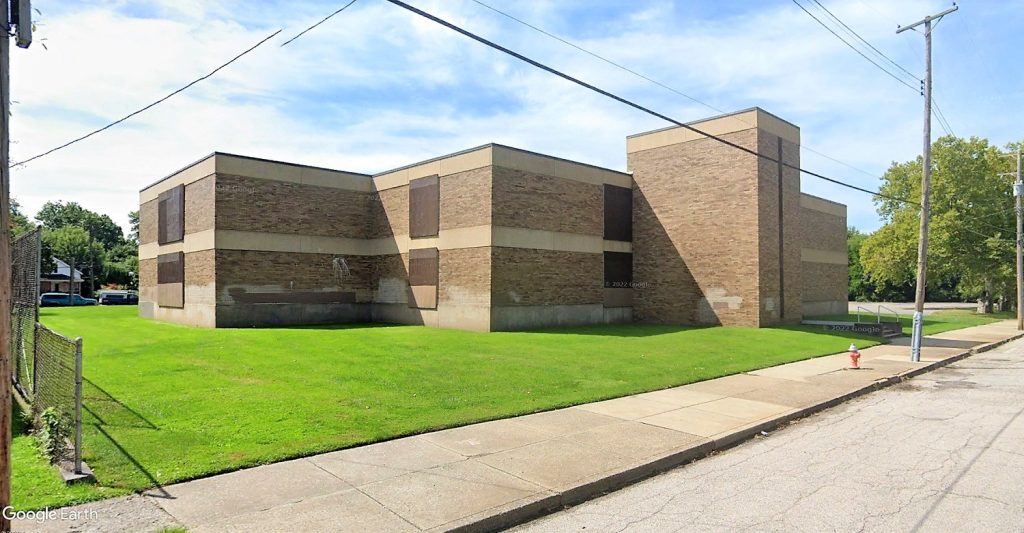
Officials and families gathered June 29, 2021 for the Wendy Park pedestrian-bike bridge ribbon cutting ceremony. More urban core public infrastructure projects like this could be afforded with the city’s proposed tax increment financing district. But some are concerned that services and infrastructure in neighborhoods away from downtown will be neglected (Cuyahoga County). CLICK IMAGES TO ENLARGE THEM.
TIF to spur development downtown, citywide
Cleveland’s biggest source of tax base is its downtown which supports services and infrastructure in the rest of the city. City officials are seeking to leverage investments in its urban core to create a feedback loop to support downtown and other neighborhoods. But not everyone is convinced this is a good thing for the rest of the city and cynics are seeking more information and research before deciding.
Yesterday, at the first Cleveland City Council meeting of 2024, the Bibb Administration introduced legislation to create a new tax increment financing (TIF) District. The proposed Shore-to-Core-to-Shore TIF District is designed to create, capture, and leverage growth in Cleveland’s Downtown to support public improvements that will transform the city’s waterfronts, improve the downtown core, and fund investments in parks and public spaces across Cleveland neighborhoods.
“We have a once-in-a-generation opportunity to make Cleveland one of the nation’s most attractive two-waterfront cities, and we will do it in a way that puts people first and increases the quality of life for residents across the entire city,” said Mayor Justin Bibb in a written statement.
Within the Shore-to-Core-to-Shore TIF District, a portion of new property tax revenue generated by an increase in property values will be set aside for authorized public infrastructure investments with the potential to drive additional development and growth. City officials urged residents to read their TIF fact sheet, POSTED HERE.
Historically, TIFs have been used in Cleveland on a project-specific basis for things like new hotels and shopping centers, but the Shore-to-Core-to-Shore TIF District will capture property tax growth from a broad geographic area and use the proceeds for public improvements. Similar strategies have been successful in peer cities including Columbus (Easton and the Arena District) and Cincinnati (Downtown/Over-the-Rhine and Uptown Gateway), to spur significant growth.
The TIF district also lays the foundation for a secure stream of revenue that will increase the potential for federal, state, and new private investment in Cleveland—one example being the recent $15 billion strategic partnership between Kansas City and the U.S. Department of Transportation.
“Over the past 100 years there have been dozens of plans and ideas put forward for the lakefront, riverfront and public spaces across the city—but no way to fund them,” said Cleveland’s Chief of Integrated Development Jeff Epstein. “TIF is a financial tool that gives us local funding to put our plans into action, the leverage to attract additional investments and, ultimately, puts Cleveland on a growth trajectory that benefits the entire region and its taxing entities.”
TIFs are typically in place for 30 years and the Shore-to-Core-to-Shore TIF would take effect for a 30-year period beginning Dec. 31, 2023, following passage of the legislation. In November 2023, city council passed legislation that extended five existing TIFs for an additional 30 years beginning in 2033 with the last of the five resetting in 2036. Depending on the amount of property value appreciation, the combined value of the existing TIFs and the new Shore-to-Core-to-Shore TIF District is estimated to be between $3.5 and $7.5 billion over the next 42 years.
Funds from the Shore-to-Core-to-Shore TIF can only be spent on public improvements and additional legislation must be passed to spend dollars generated by the TIF. While the success of the strategy relies on making substantial public infrastructure investments on the lakefront and Cuyahoga riverfront, funds from the TIF district can be spent anywhere within the City of Cleveland, allowing for investment in the citywide Parks and Recreation Master Plan and other public improvement projects in Cleveland’s neighborhoods.
“City Council is very interested in this proposal, and we are looking forward to learning more and collaborating as the process continues,” said Cleveland City Council President Blaine A. Griffin. “The TIF District has great potential to fuel growth and fund much-needed public improvements across our city.”
The proposed legislation prohibits funds from being used for any sports stadiums or arenas and does not impact revenue generated by existing TIFs. The proposed TIF district is also a non-school TIF, which means the Cleveland Metropolitan School District will continue to receive the amount of property tax payments that would have been payable to the school district if there were no TIF in place.
Additionally, the Core-to-Shore-to-Core TIF will not reduce current taxes paid to entities that receive a share of property taxes. Over the long term, even the most conservative estimates show that revenue growth in income tax, sales tax, and property tax across the entire region will more than offset the use of property tax revenue increases from the TIF District for public improvements.
“Now is the time for us to go beyond managing decline and make major investments in our future,” said Mayor Bibb. “This is our moment, and these investments will strengthen our Downtown core and serve as a catalyst to make Cleveland the truly world-class city we know it can be.”
END





